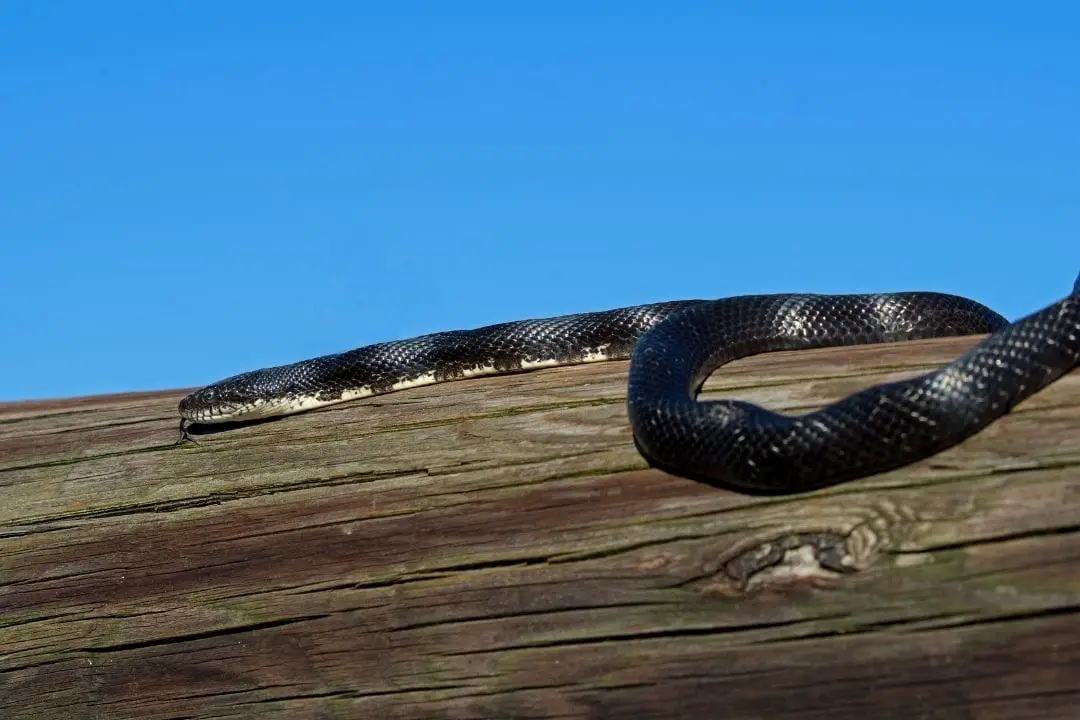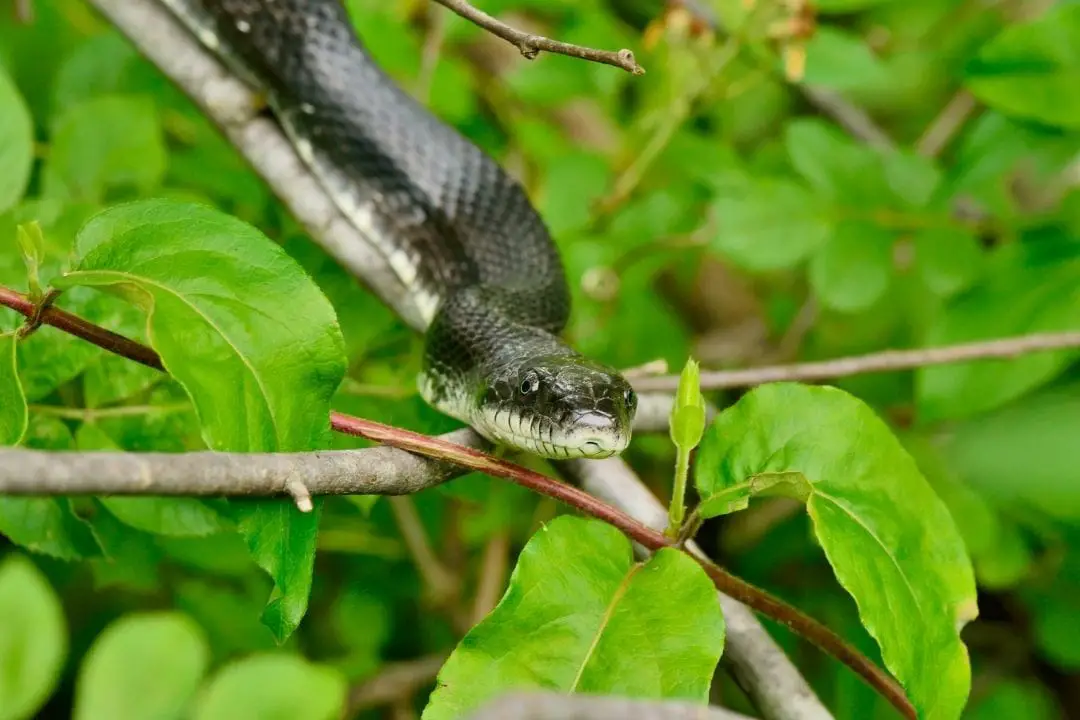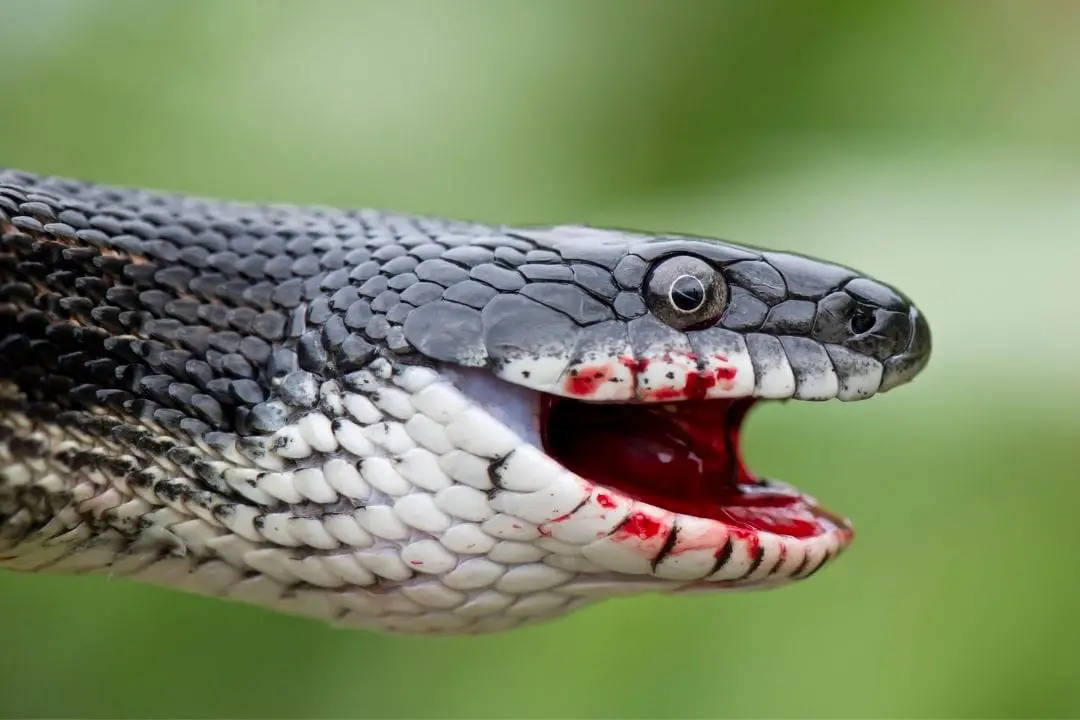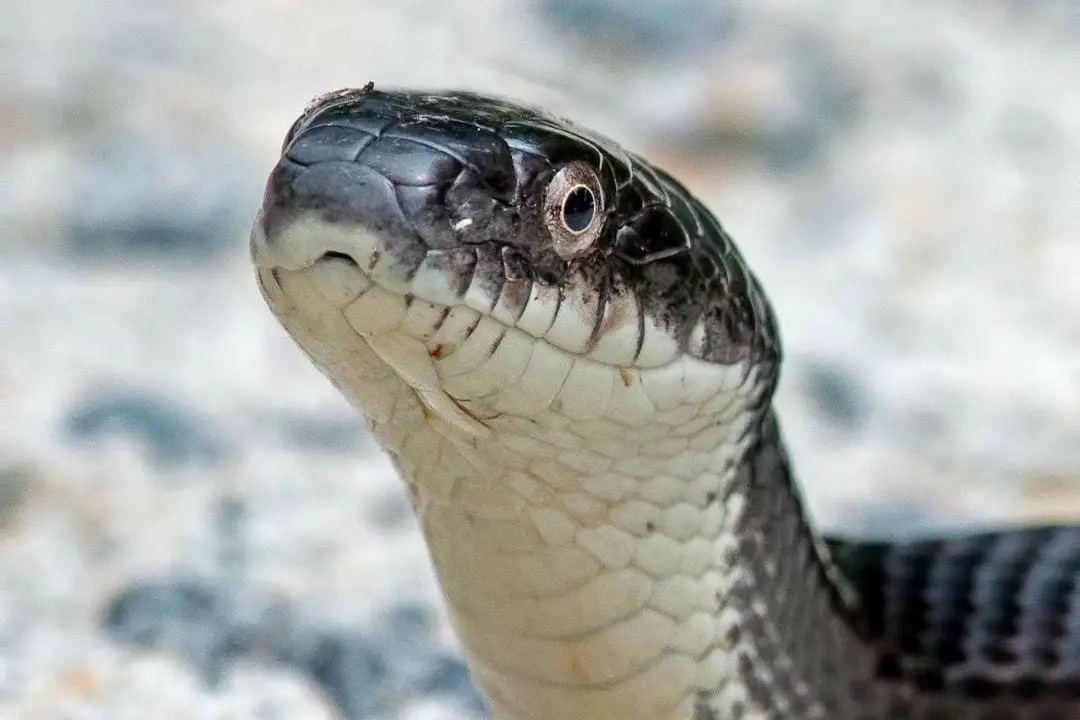The eastern rat snake (Pantherophis alleghaniensis) is a common snake in the pet trade and its native habitat of the eastern and southern United States.
How big do eastern rat snakes get?
The eastern rat snake grows to between 3.5 and 7 feet in length.
In the Wild
The eastern rat snake is also commonly known as the black rat snake thanks to the fact that most of this species is black as an adult. They have a white chin and a checkered belly.
Juveniles are typically brownish gray and have irregular splotches that go down the body. This pattern fades as they reach adulthood, though some individuals will retain faint patterning throughout their lives.
Snakes from Florida are typically yellow to orange and have 4 stripes that travel the length of the body.
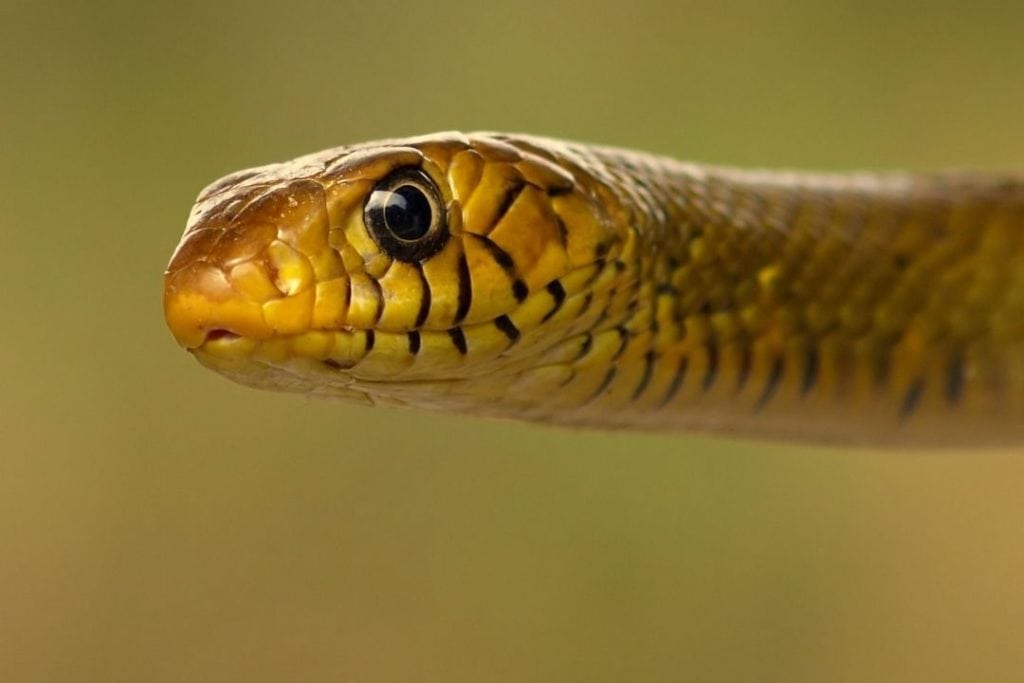
All animals will reach a size of 3.5 to 7 feet in length though they may get larger on occasion. Some animals have been recorded that were 8 feet in length.
Males are typically longer than females in this species. All animals have a head that is distinct from the body. They are stout snakes and have a crosssection like a loaf of bread when in good health. They have weakly keeled scales that help identify them from similar species.
These are non-venomous animals that use constriction to kill their prey. They typically eat rodents as adults but will eat nearly anything they find.
This includes lizards, amphibians, and birds as well as eggs. They hunt via smell and can be found both on the ground and climbing. These animals reach sexual maturity after about 7 years of age and live for 20 years or more.
In Captivity
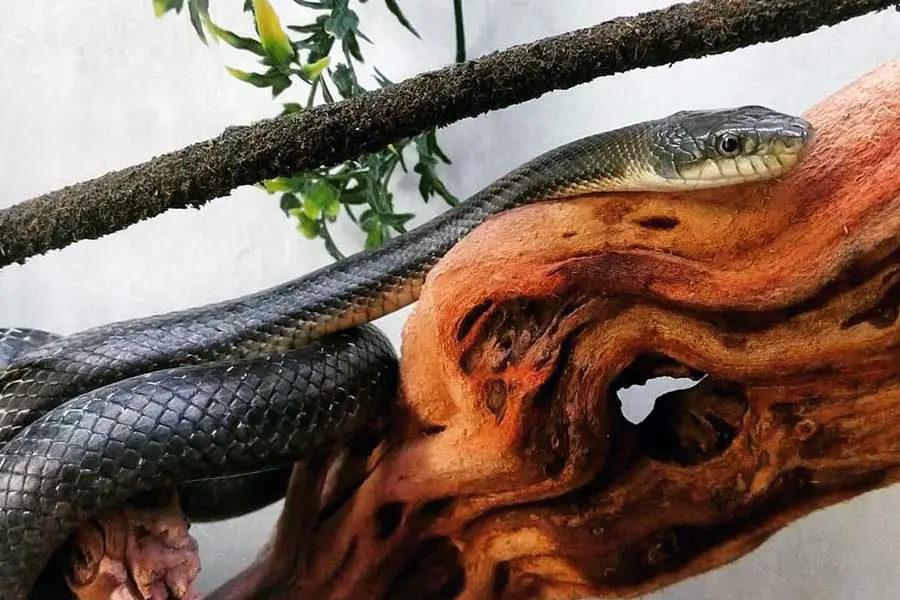
Everything you need to know about caring for Black Rat Snakes in captivity:
Read our Black Rat Snake Care Sheet (Complete Guide)
Eastern rat snakes are a common pet thanks to their docile temperament and ease of handling.
While they do grow larger than many other snakes, they are popular for their beautiful colors and many breeders have even put out color morphs onto the market. They also do well on a diet of frozen rodents, so they are easy to keep healthy.
In captivity, they do require a larger enclosure than many other snakes. Young snakes can be kept in a 20-gallon enclosure. Look for one that opens from the front since approaching a young rat snake from above is a good way to get it to strike out defensively.
They prefer having some room to climb, so you will need branches and a taller enclosure than a purely terrestrial or burrowing species would require.
For juveniles, you should aim to upgrade the enclosure when the snake has reached just under twice the length of the enclosure. You can buy an enclosure that is adult-sized, just know that you will need more decorations like greenery to fill the space so your snake doesn’t feel exposed.
An adult snake will need a larger enclosure. The formula for a properly sized enclosure is the length of the snake by half of its length for the width and height.
These snakes will welcome more room since they are active.
Make sure to have enough height to allow the snake to climb. Many of these snakes enjoy having shelves added to taller enclosures so they can rest at different levels.
Just be sure your temperatures aren’t too low if you have a taller enclosure. Having both belly heat from a heat mat and a ceramic heater outside the enclosure can help keep the ambient temperature at the 80 degrees this species prefers.
You will need about 82-85 degrees for a warm spot and about 75 degrees for the cool side. You will also need to add hides.
You may think you can get away with a smaller enclosure, but there are a number of reasons why you need a large enclosure for these snakes. The first is that these snakes are active and need exercise.
By offering more space your snake can keep itself healthy and perform natural behaviors. These snakes are active hunters, so they do not stay in one spot and wait for prey to come to them.
All snakes need to stretch out to help with digestion. If the snake feels cramped or like it can’t digest a meal, it may regurgitate it which can injure or kill a snake.
A larger enclosure also allows a better thermal gradient. Since snakes are ectotherms, they need to use the temperature of their surroundings to regulate their internal body temperature.
By offering more space, your snake can stay more comfortable in its enclosure. If you worry about your snake feeling exposed, just add more hides and decorations like branches, rocks, and greenery to the enclosure. You can use artificial greenery or even plant your enclosure with live plants.
Just be sure you pick plants that can handle a large snake possibly trying to climb it. A bio-active setup can be very attractive, but not everyone feels equipped to set these up since they require a lot of initial work to create.
Conclusion
The eastern rat snake is one of the largest snakes found over much of their native range. They typically stay between 3.5 and 7 feet, but the record is over 8 feet.
They are docile snakes that make great pets, but they do need more space than many other common species. Their size can also make them a bit trickier to handle than something like a corn snake or a western hognose.
If you have any questions or comments, be sure to leave them below. If you own an eastern or black rat snake, tell us how big your own snake is!
